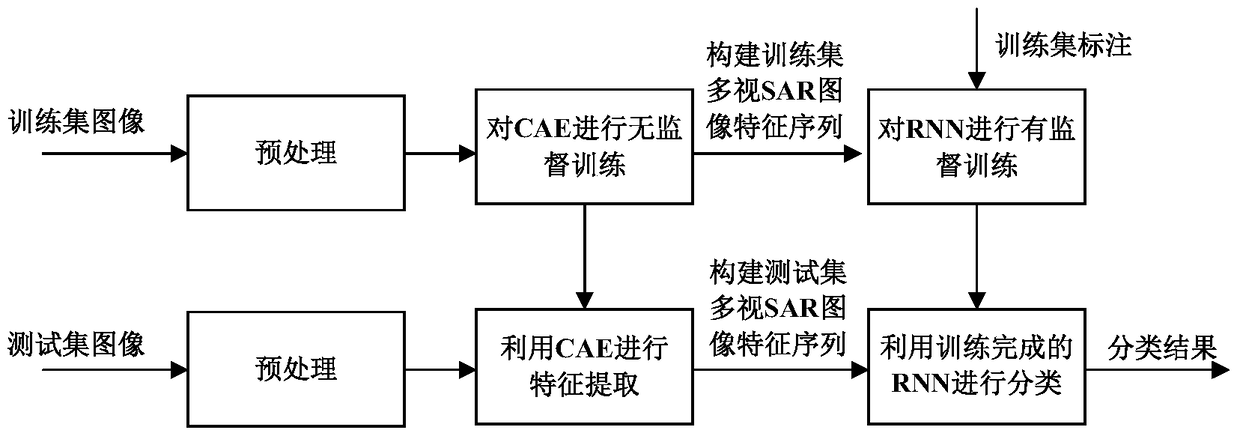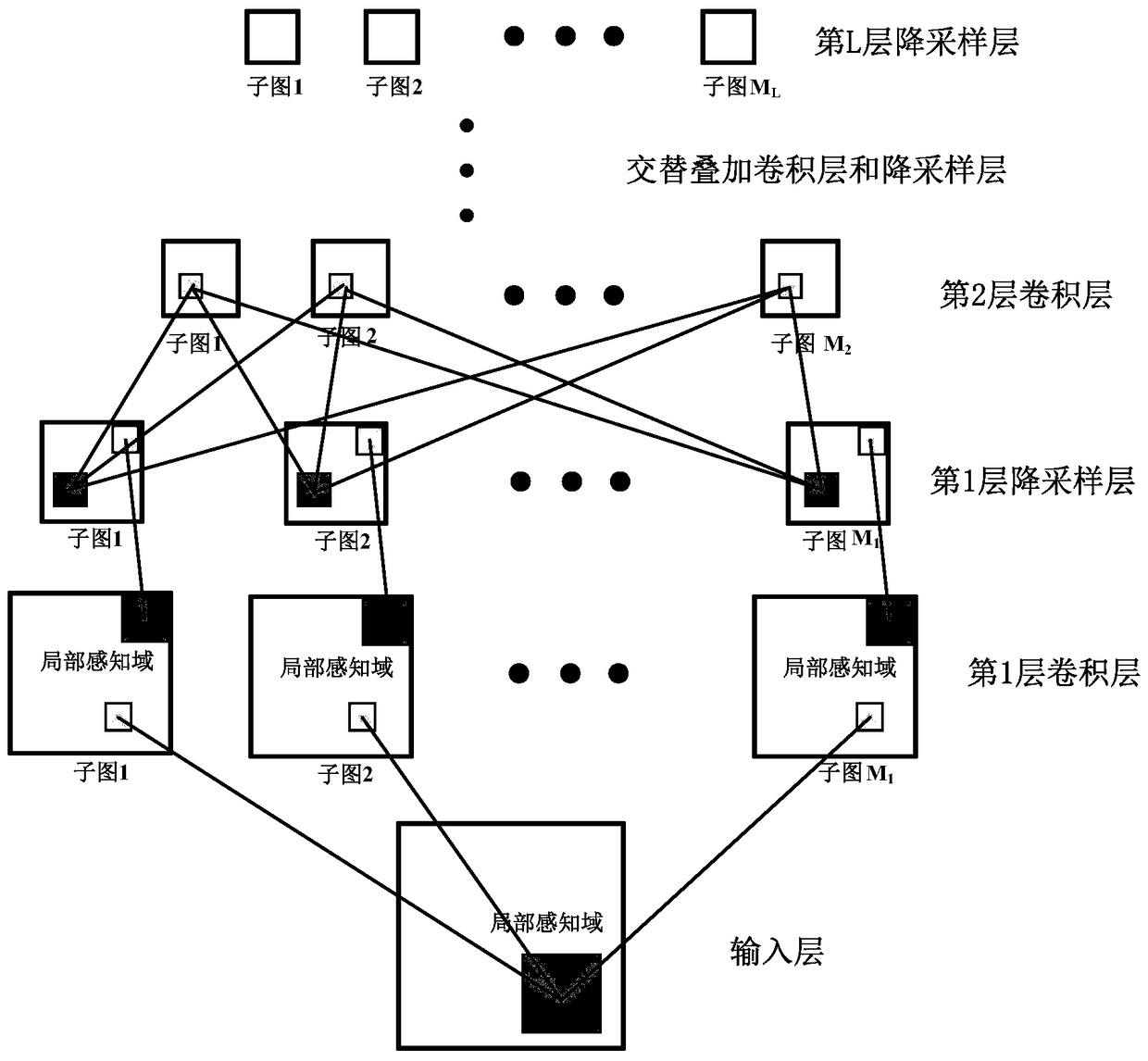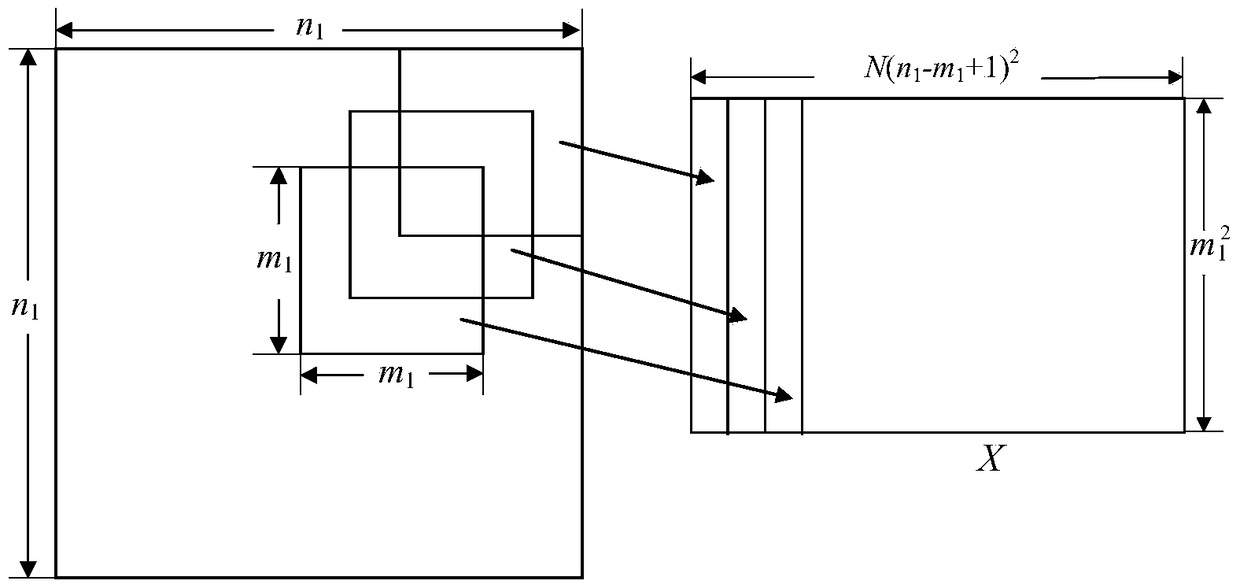A multi-view SAR image target recognition method based on deep neural network
A deep neural network and image technology, applied in the field of multi-view SAR image target recognition, can solve the problem of not being able to make full use of image correlation
- Summary
- Abstract
- Description
- Claims
- Application Information
AI Technical Summary
Problems solved by technology
Method used
Image
Examples
Embodiment
[0122] A multi-view SAR image target recognition method based on deep neural network, specifically:
[0123] Step 1. Perform preprocessing such as size cutting and energy normalization on the input training set images and test set images.
[0124] Select three data sets of T72, BMP2, and BTR70 in the MSATR database, among which the training set is T72_132, BMP2_S71, and BTR70_C71 collected at a 17-degree viewing angle, and the test set is T72_132 collected at a 15-degree viewing angle. T72_812, T72_S7, BMP2_9563, BMP2_9566, BMP2_S71, BTR70_C71 these 7 data sets.
[0125] (1) Crop the original training image and the obtained test images of various resolutions, from 128×128 to 64×64.
[0126] (2) The energy normalization method is used to normalize the training set images and test set images. The formula is as follows
[0127]
[0128] Step 2. Construct a convolutional sparse auto-encoder (CAE for short) including a convolutional layer and a downsampling layer, and use uns...
PUM
 Login to View More
Login to View More Abstract
Description
Claims
Application Information
 Login to View More
Login to View More - Generate Ideas
- Intellectual Property
- Life Sciences
- Materials
- Tech Scout
- Unparalleled Data Quality
- Higher Quality Content
- 60% Fewer Hallucinations
Browse by: Latest US Patents, China's latest patents, Technical Efficacy Thesaurus, Application Domain, Technology Topic, Popular Technical Reports.
© 2025 PatSnap. All rights reserved.Legal|Privacy policy|Modern Slavery Act Transparency Statement|Sitemap|About US| Contact US: help@patsnap.com



